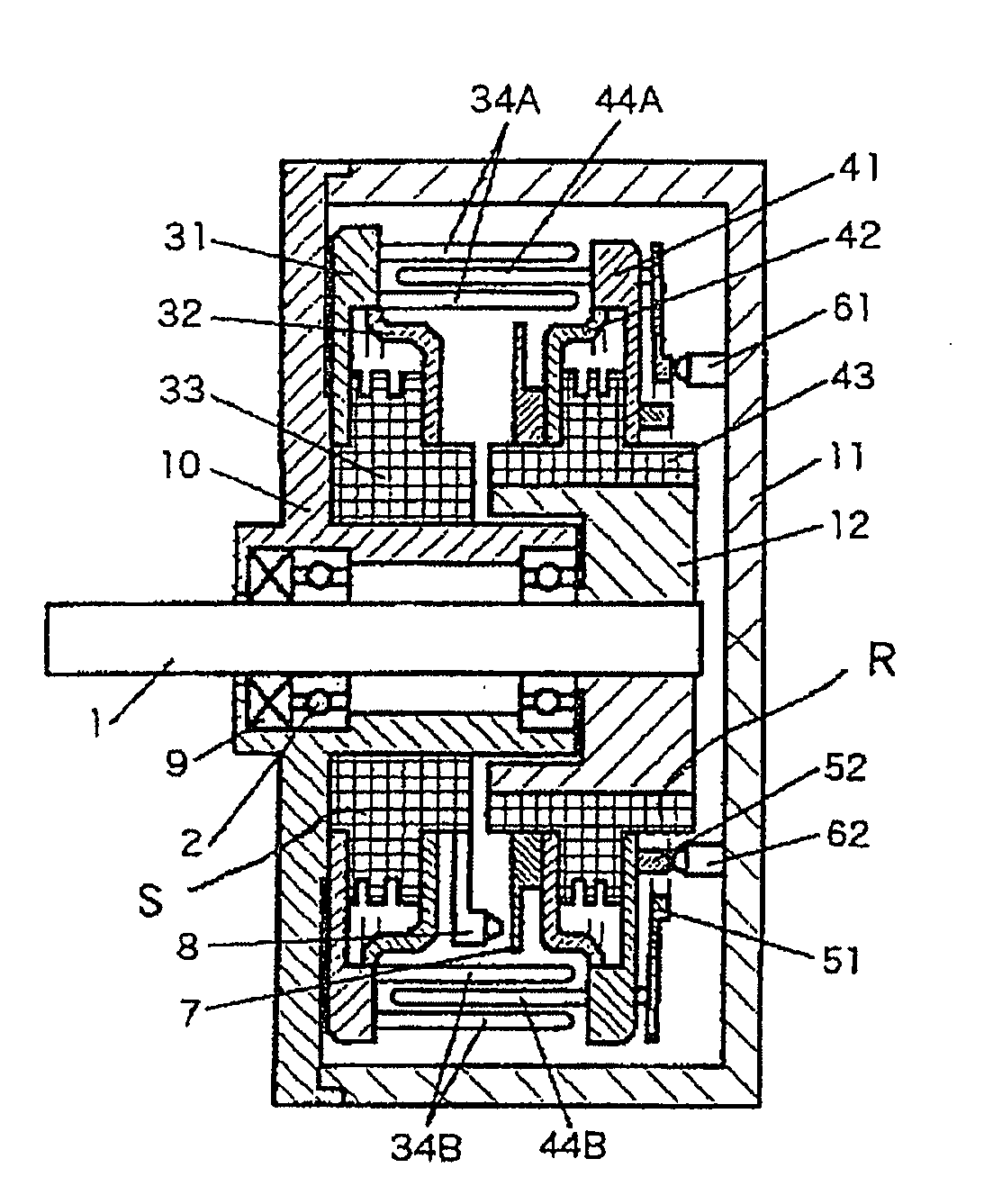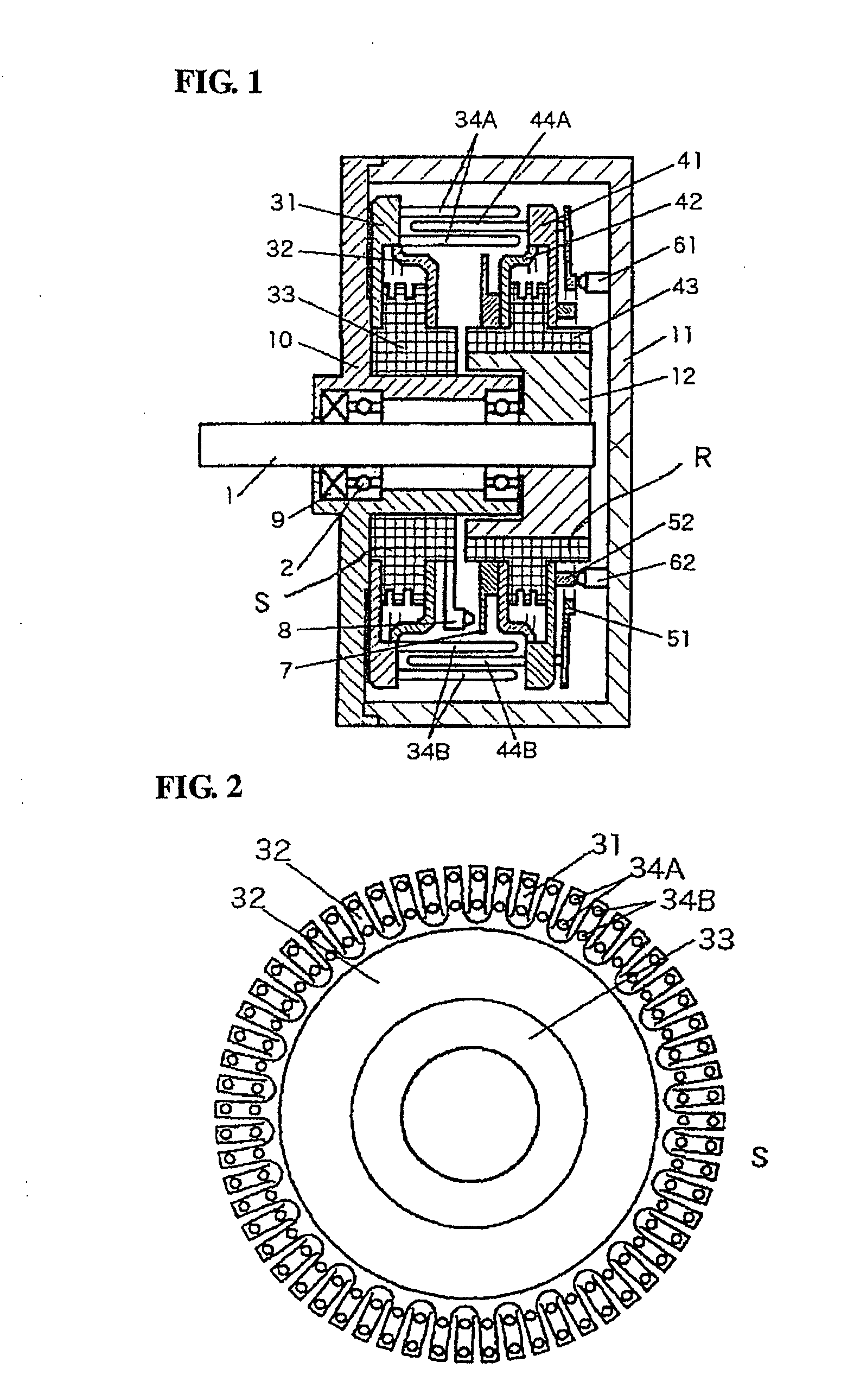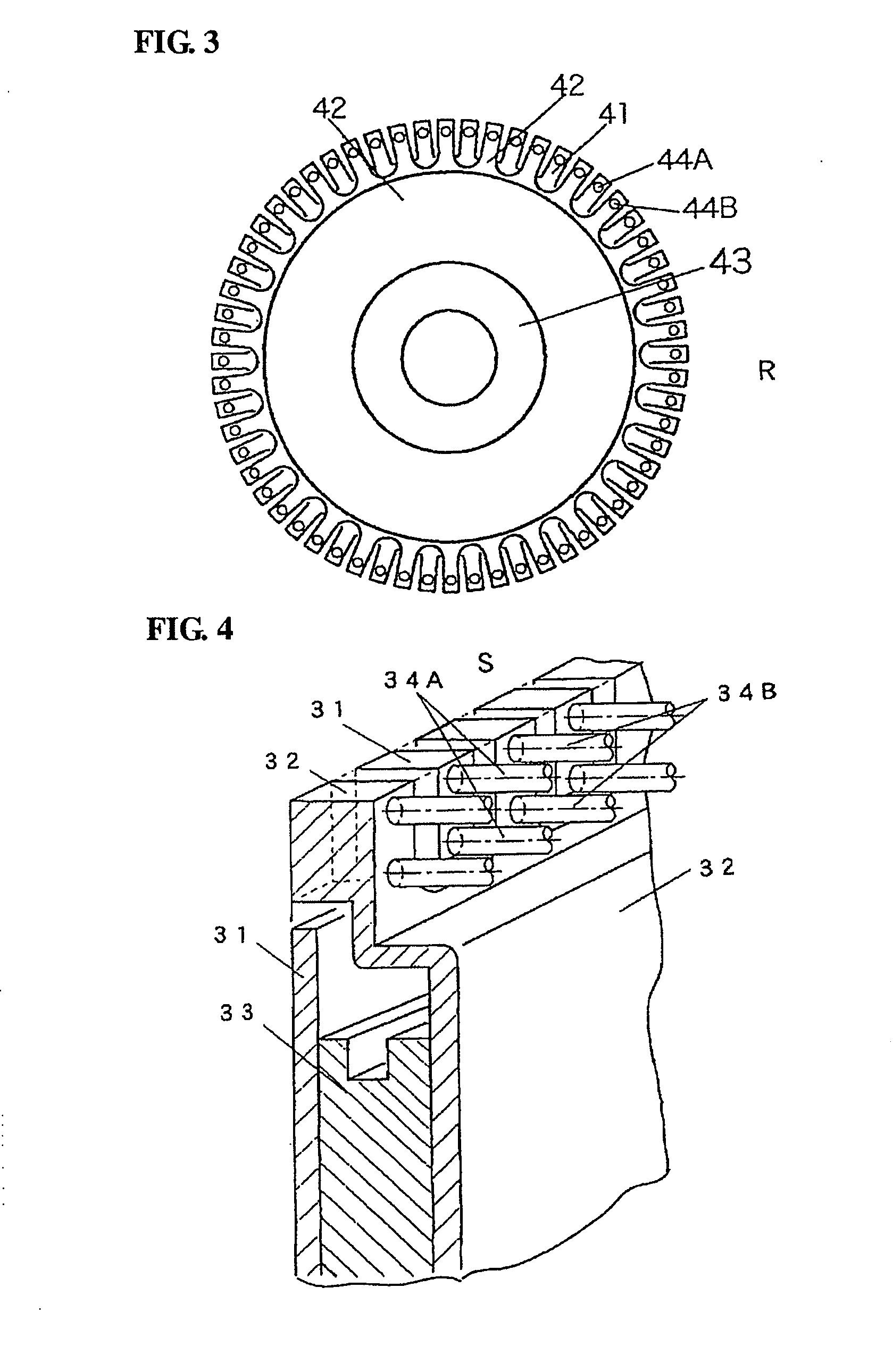Electrostatic motor
a technology of electrostatic motor and motor, which is applied in the direction of electrostatic generator/motor, electrostatic motor, electric motor, etc., can solve the problems of prone to dielectric breakdown, creeping discharge, spark discharge, etc., and achieves sufficient driving force, prevent dielectric breakdown, and improve efficiency
- Summary
- Abstract
- Description
- Claims
- Application Information
AI Technical Summary
Benefits of technology
Problems solved by technology
Method used
Image
Examples
first embodiment
[0045]Additionally, in the first embodiment, stainless steel or the like that produce less residual gas may be used as metallic components that are placed in the vacuum container 11 (e.g., the first and second electrodes 34A, 34B, electrode supports 31, 32, first and second electrodes 44A, 44B, and electrode supports 41, 42). Also, an inorganic insulator such as porcelain or glass, which produces less residual gas, may be used as an insulating components. The usability of the electrostatic motor in the clean vacuum can thereby be ensured. It is also effective to deposit a gas absorbing material (i.e., gettering substance), such as titanium, vanadium, tantalum, or zirconium, on components used in the vacuum container 11.
[0046]In the first embodiment, using a nonmagnetic material as the metallic components used in the vacuum container 11 enables a nonmagnetic motor that can be used in a strong magnetic field. Additionally, no heavy magnetic material is used as the metallic components,...
second embodiment
[0052]Next, an electrostatic motor according to the present invention will be described.
[0053]FIG. 8 shows a vertical section of an electrostatic motor according to the second embodiment. In FIG. 8, elements identical to those in the illustrations of the first embodiment are labeled with the same symbols and duplicate explanation of these elements is avoided.
[0054]In the second embodiment, three rows of first electrodes 34A and three rows of second electrodes 34B are disposed along the circumferences of electrode supports 31, 32 respectively, on the stator S side. Similarly, two rows of first electrodes 44A and two rows of second electrodes 44B are disposed along the circumferences of electrode supports 41, 42 respectively. In the second embodiment, an electrostatic motor with a high output is produced by increasing the number of electrodes.
third embodiment
[0055]Next, an electrostatic motor according to the present invention will be described.
[0056]FIG. 9 shows a vertical section of the electrostatic motor according to the third embodiment. In FIG. 9, elements identical to those in the illustrations of the first embodiment are labeled with the same symbols and duplicate explanation of these elements is avoided. The encoder, the slip rings, and the brushes are not shown.
[0057]In the first and second embodiments, limitations resulting from a cantilever structure impede any unnecessary increase in electrode length. In the third embodiment, first electrodes 44A are extended from both sides of each of electrode supports 41 on the rotor R side, and second electrodes 44B are also extended from both sides of each of electrode supports 42 on the rotor R side. This allows an output that is twice as high as that of an electrostatic motor with cantilever structured electrodes in the first embodiment. In addition, the first and second electrodes 3...
PUM
 Login to View More
Login to View More Abstract
Description
Claims
Application Information
 Login to View More
Login to View More - R&D
- Intellectual Property
- Life Sciences
- Materials
- Tech Scout
- Unparalleled Data Quality
- Higher Quality Content
- 60% Fewer Hallucinations
Browse by: Latest US Patents, China's latest patents, Technical Efficacy Thesaurus, Application Domain, Technology Topic, Popular Technical Reports.
© 2025 PatSnap. All rights reserved.Legal|Privacy policy|Modern Slavery Act Transparency Statement|Sitemap|About US| Contact US: help@patsnap.com



